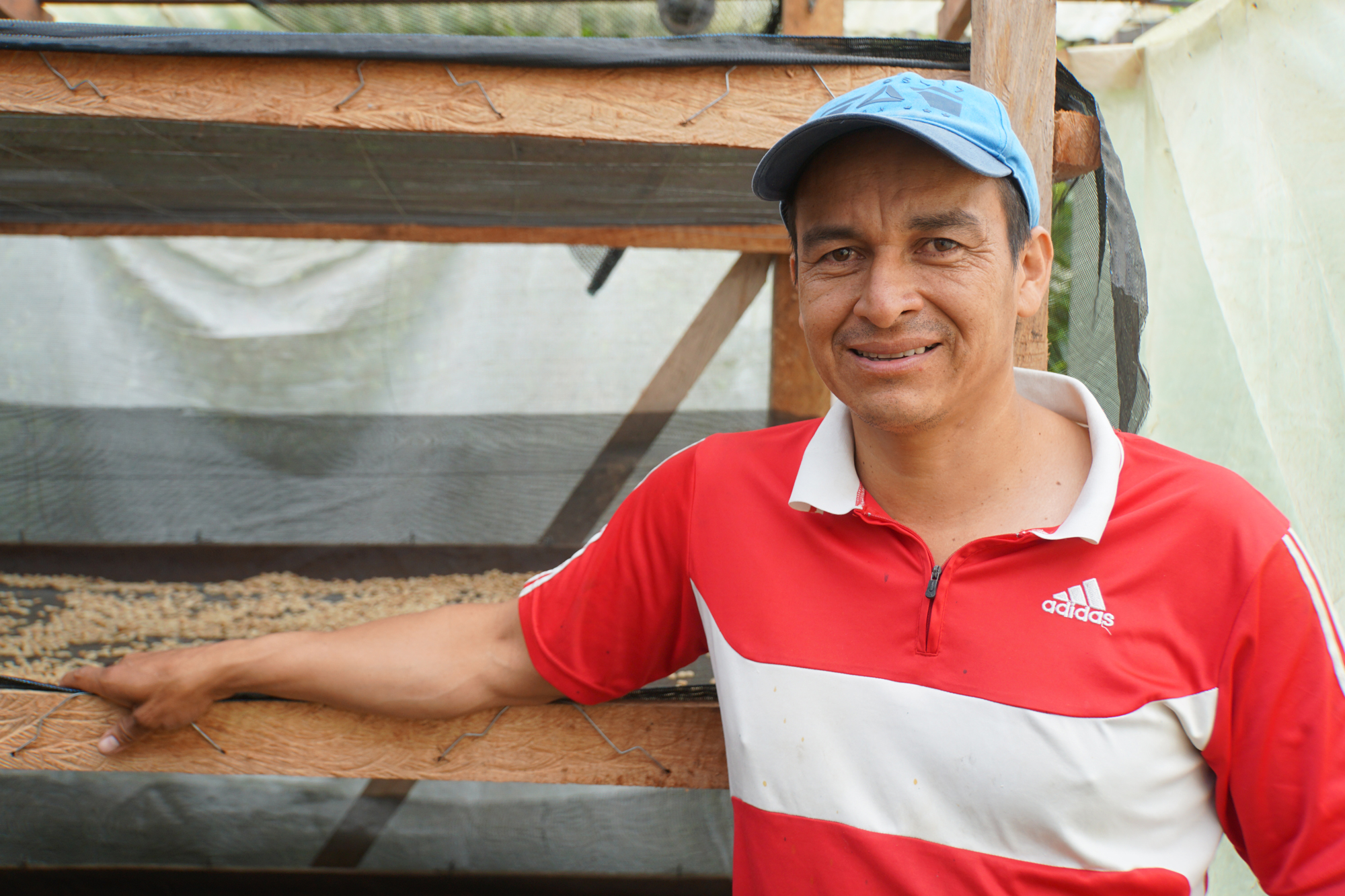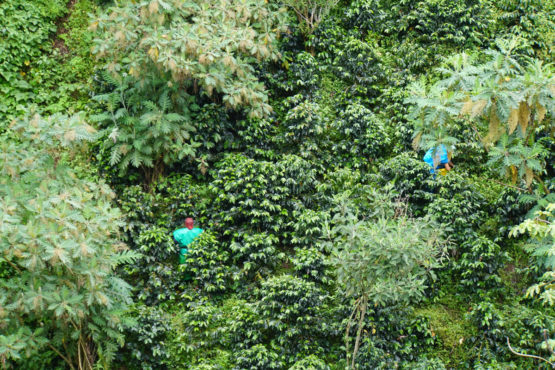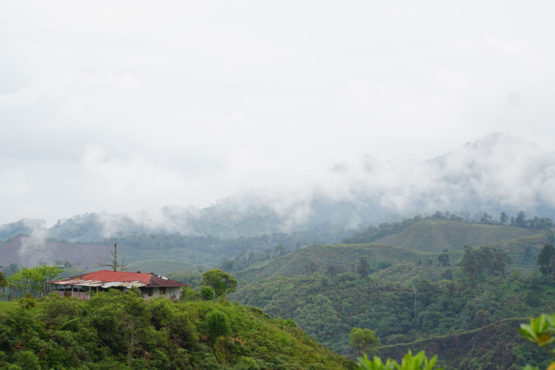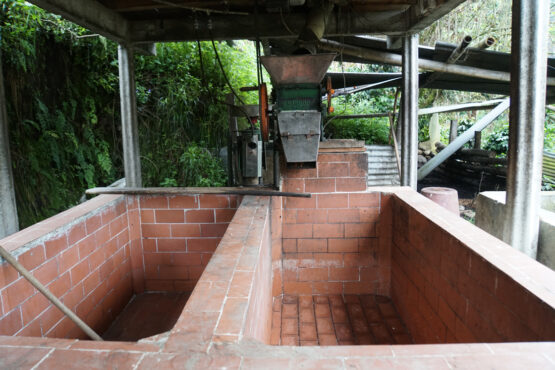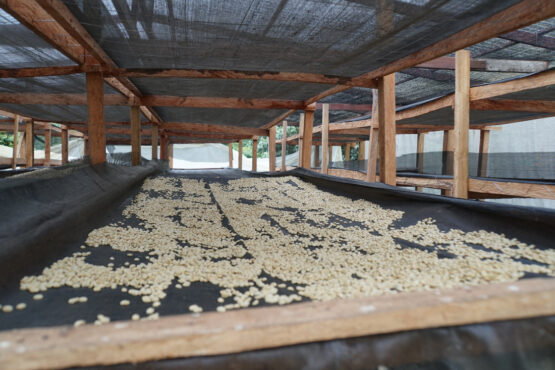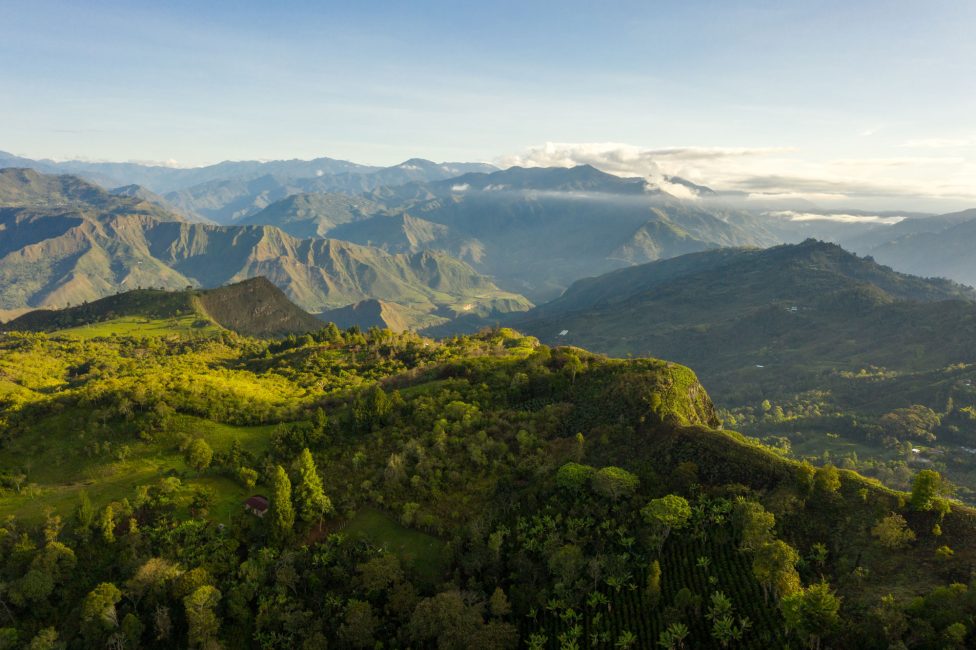Los Aguacates
Tropical acidity, with passionfruit, papaya and lime. Candied sweetness and a juicy body. Distinct and complex.
This micro-lot was produced by Luis Ernesto and Cenaida Nieto on their 6-hectare farm, Los Aguacates (meaning “the avocados” in Spanish), located near the small community of China Alta, in the municipality of Ibagué, in Colombia’s Tolima state.
Finca Los Aguacates sits at a staggering height of 1850 meters above sea level, in the steep, rugged hills that surround Tolima’s capital city, Ibagué. The region of China Alta is named for the Rio La China, a small and beautiful river that swerves through the mountains and eventually feeds into Rio Magdelena, Colombia’s principal river. Alta refers to the higher elevations of the area, where the sweetest and most refined coffees are grown and harvested. The farm sits on the steep valley walls of Rio La China, which is used as a water source to irrigate and process the coffee.
Luis Ernesto is a third-generation coffee grower. His father, Don Ernesto Sr., purchased Los Aguacates in 2002, eventually gifting it to his son. Luis Ernesto now manages the farm with his wife, Cenaida, and their oldest son Jaider. His daughter Taliana is twelve years old and dreams of continuing her family’s coffee tradition by becoming a barista.
On advice from the Federación Nacional de Cafeteros (FNC) the family planted the farm primarily with the Castillo variety, which was promoted for its sturdiness and resistance to leaf rust. However, this variety does not yield well at higher elevations and the lower cup quality prevented them from entering the specialty market. Now, they are now in the process of migrating to the Caturra variety, which does better in the high hills of China Alta and has a sweeter and more refined cup quality. This allows the family to sell their coffee to specialty buyers and maximise the profits they can make off of their land. They have also recently planted 2 hectares with the Geisha variety.
ABOUT CHINA ALTA
Historically the area of China Alta has been known for cattle, sugarcane and trout, which are farmed in pools along the river. Coffee is a relatively new crop for the region, having only been planted in the last 30-40 years. Most coffee farmers purchased land in the area because it was more affordable than traditional coffee farming areas like Planadas and Chaparral, in Tolima’s south. Higher elevation areas were considered less prosperous than lower areas because they typically achieve lower yields. However, this region has since gained acclaim for the high cup quality, sweetness and complexity of the coffees produced here.
Most farms in the region are planted with the Caturra variety, which was the most popular variety during the 1970s and 1980s when the farms were established. Coffee in China Alta is farmed with traditional techniques. Fertilisation occurs around three times a year, usually after manual weeding, and pesticides are rarely used. The coffee is selectively hand-harvested, with most labour being provided by the farmers and their families.
ABOUT TOLIMA
Coffee from Tolima has historically been very difficult to access due to the region’s isolation and instability. For many years this part of Colombia was under the control of Colombia’s notorious rebel group, the FARC, and as a result, it was unsafe and violent. Since 2012, safe access to this region has been possible as a result of peace talks between the Colombian government and the rebels. Since this time some stunning coffees from small producers have become accessible to the international market.
The word ‘Tolima’ comes from the local indigenous language and means a “river of snow or cloud”. The region sits on the Cordillera Central, in the middle of the three mountain ranges that provide a range of microclimates well-suited to high-quality coffee production. Coffee is the leading agricultural activity in the region, followed by beans and cattle.
The most well-known regions in Tolima for specialty coffee are Planadas and Chaparral in the south. This coffee comes from the areas surrounding Ibagué, which is further north in the state. The city is also known as the “Ciudad del Abanico” or the “city of the folding fan” because when you look at it from the sky the rivers running from the mountains split up the crops of rice and cotton, and it looks like a beautiful handmade folding fan.
HOW THIS COFFEE WAS SOURCED
The coffee is sourced by our export partners, Pergamino, who work with small producers who have farms near the villages of China Alta and San Juan de la China. These villages are located on steep mountains to the north-east of Ibagué, which creep up fast, going from 1,300 meters above sea level to 2,000 meters in a matter of 30 or 40 km. Due to the steep terrain and bumpy back road that is required to get there, they take around 3 hours to access by car. Pergamino has done a lot to help promote commercialisation of specialty coffee throughout Tolima and have actively been working to source and support coffee producers in regions where there is a high potential for quality, but historically have not had access to specialty buyers.
Pergamino purchases coffee from around 40 independent coffee growers in the Ibagué area, including Luis Ernesto and Cenaida. During harvest, the farmers deliver small lots (around 100-150kg) of dried parchment to Pergamino’s Ibagué warehouse every 2-3 weeks. The warehouse in Ibagué is operated and overseen by manager Gonzales, who has a long history of working with Pergamino’s Director of Coffee, Léonardo Henao (he was Léo’s first boss in coffee!). Upon delivery, a sample of the dried parchment is milled and assessed for physical attributes, including uniformity of size, presence of defects, moisture content and seed to hull ratio. If the coffee passes the physical assessment it is accepted and the farmer receives their first payment for the coffee, calculated by the weight delivered and a base rate related to the physical quality of the parchment.
The coffee is then cupped and assessed for sensory attributes. After being accepted by the team in Ibagué the coffees are transported to Pergamino’s QC lab in Medellin, Antioquia, where they are further assessed by an expert team of cuppers. Each lot is carefully evaluated and based on the cup score and profile, the coffee is sorted into different grades of quality and combined into exportable sized lots. Feedback on each lot is relayed back to the producer and after it has sold a second payment is made to the producer according to premium the coffee attracted.
Each season the team at Pergamino cups through hundreds of small lots from independent farmers, looking for coffees that exhibit excellent cup characteristics and showcase the region where they were produced. Luis Ernesto and Cenaida’s coffee was selected to be processed separately as a micro-lot for its distinct character and high cup quality.
HOW THIS COFFEE WAS PROCESSED
This lot was selectively hand-harvested, with most labour being provided by Luis Ernesto and his family. During peak harvest, the family hires local labourers to help harvest the coffee cherry, who are paid on per kilogram or on a daily rate when there isn’t much coffee to harvest. Luis Ernesto prefers to work with the same local pickers every year as he has taught them how to select only the ripest cherry for processing.
The cherry was then processed using the washed method at Los Aguacate’s ‘micro-benficio’ (wet mill). The coffee was hand pulped and then placed into a fermentation tank. Because of the cooler climate in China Alta, producers like Luis Ernesto tend to ferment the coffees for longer than usual and will often blend several days’ worth of pickings over a 2-3 day period. Everyday freshly picked cherry is pulped and added to the mix, which lowers the pH level and – along with the cooler temperatures – allows for an extended fermentation process. This fermentation process contributes to a vibrant, winey acidity in the coffee’s cup profile.
Following fermentation, the coffee was washed using clean water from the Rio La China and then carefully dried (over 10–18 days) on raised beds in a greenhouse, which protects the coffee from rain and have adjustable walls to help with airflow, and temperature control to ensure the coffee can dry slowly and evenly.
Once dry, the coffee was delivered to Pergamino’s warehouse, where it was cupped and graded, and then rested in parchment until it was ready for export.
Read more about our Colombian export partner, Pergamino, here.
